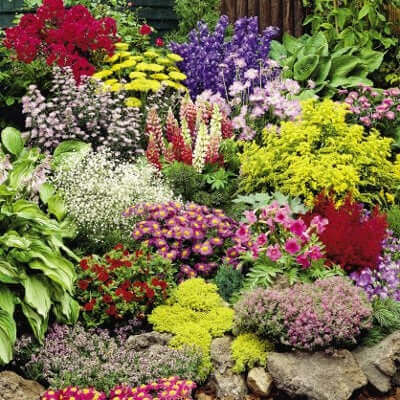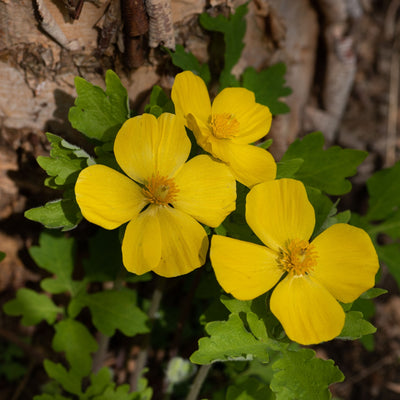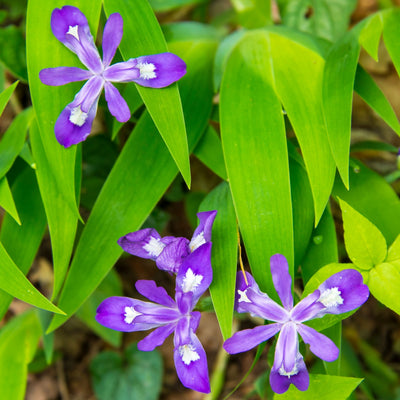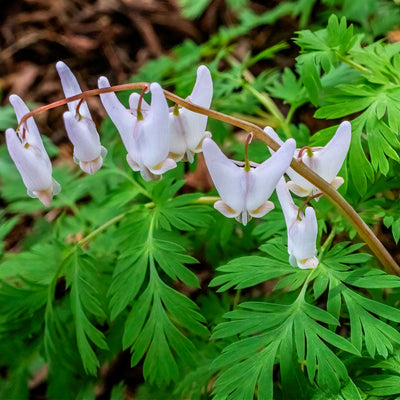Perennials are nature's gifts
Spring is just around the corner, and with it comes fresh blooms to enjoy in your garden. Perennials are nature's gifts that give us something to look forward to each year. This article will explore some of the most beautiful perennials you can add to your 2023 garden space for years of colorful enjoyment. Let's dive into perennial flowers and uncover the best options for cultivating a heavenly outdoor oasis! Stay tuned!
Golden Poppy Plant
It is a Poppy Plant that originates from woodlands and thrives in moist and fertile soil. It has stunning orange and yellow flowers that contrast with the leaf's blue-green hue and create a beautiful contrast.
The plants self-sow and do well if the soil is kept moist and there is lots of shade. On average, Celandine Poppy Plant grows to approximately 24 inches in height. While it is often regarded as an uncultivated woodland plant, it is a cultivated plant. Celandine Poppy Plant grows well in gardens, providing plants with plenty of organic ground and shade.
The most effective method to cultivate this Celadine Poppy plant is from seeds. Poppy plants tend to multiply if you have the proper growing conditions. Generously sprinkle the seeds over the soil and add ample compost. If the seedlings begin to sprout and grow to about four inches high, it's crucial to thin them out. The plants that germinate require plenty of room to develop.
The other plants must be about 12 inches from each other. If you plant seeds during autumn, they will begin to germinate in spring, but they will not flower until the following year. While the plants typically develop in two or three months, should you employ deadheading by cutting off blooms after some time, you can be blooming for the majority of the summer.
Mayapple
More durable than other ephemerals, Apple grows up to 30-40 cm tall, with tall stems with two to three leaflets palmately lobed up to 30cm in diameter. From those, five to nine lobes reproduce. The flower, diameter 3-5 cm, blooms in a pale yellow. When they mature, the plant changes into fruit.
The lush greenery creates a plant that is fertile for reproduction
The seeds dispersed over a long distance appear as circular clones that reproduce yearly. The forest's protection will ensure that the seeds can produce. May Apple be a wonderful accessory to any house!
May Apple is native to North American deciduous forests. May Apple grows under the forest's canopy, blooms, and dies in late summer.
Dwarf Crested Iris
Iris Cristata is a North American native species commonly found in the hills and mountains of the east coast, with rocky outcrops or slopes with woody vegetation and close to creeks or streams. It's beautiful, but it's a straightforward plant that thrives in nearly any filtered, shady area.
Iris Cristata is drought-tolerant and resistant to deer. The woodland roots of the plant mean that it is a mate for loose soil, is high in woody organic matter, and has excellent drainage. But it's not uncommon to grow on the rocks of forests. It's a species that can be adapted to changing conditions.
Regular care isn't necessary. You'll need to water it in dry periods, twice-annual fertilization, and weed control. It's all you have to do to keep the crested iris content. The plant spreads via an extensive underground root system, and some even employ it as a cover plant.
A native flower of spring, the Dwarf Crested Iris delights gardeners with its vibrant lilac flowers on deer-resistant, low-growing foliage. It's ideal for woodland and rock gardens because it can be planted in shade or full shade and spreads in time. This beautiful little iris is best set in the front in traditional beds or borders to ensure maximum viewing.
Dutchmans Breeches
Several names in various parts across the globe know the Dutchman's Breeches. There are names like Bleeding Heart, White Hearts, and Soldier's Cap.
There are a variety of these gorgeous perennials
The Dutchman's Breeches feature white flowers that look like white Breeches. They are native to the forests or areas of the eastern part of North America. A large portion of them can be located throughout the Columbia Basin.
The Dutchman's Breeches are small and feature numerous small white and pink bulbs that look like teardrops. The flowers are predominantly white; however, some are pink. They flower in early spring and have up to four buds per stalk.
Dutchman's Breeches leaf measures 1 in large and includes 1 1/4 inches of length. It has a triangular shape. The leaves are divided into three leaflets that are also divided into three leaflets. A Dutchman's Breeches leaves are gray and glabrescent, green, and.
The surface of the lower leaf is more of a lighter hue than the upper areas that make up the leaf. At the beginning of the spring season, yellow leaves disappear once the seed is old. This Dutchman's Breeches grows earlier and can withstand ordinary frigid temperatures without causing damage.
Dutchman's Breeches seeds look like kidneys and feature slim designs that look like nets.
The Dutchman's Breeches plants in the western areas are denser in appearance; however, it's nearly impossible to differentiate from the eastern regions. It is typically found in the banks of streams, with dirt above the line at the point where the water is.
Jewelweed
Impatiens Capensis is a stunning colorful perennial plant. It is a North American native species that can thrive in full sunlight or filtered sun in USDA plant growth zones 2 to 11.
Jewelweed Plant is separate from its parent plant, the yellow-colored jewelweed. Although they have some commonalities, like the fact that they thrive across the entire growing zone within the adjacent United States, they are different plants.
Impatiens Capensis is named not from the flowers but rather from the leaves. The leaves are broad that catch rain and dewdrops exceptionally effectively. Since drops of water reflect the sun's rays, they appear similar to tiny crystals.
The species is renowned for its quick seed dispersal. If someone touches the seeds, the pods pop open, and seeds are released everywhere. Impatiens capensis thrives best in moist, shady areas and is quickly grown in beds or containers. It's an excellent option to add color to shaded areas in the garden.
The flower can grow up to 2 feet tall, with lance-shaped leaves and bright orange. The flowers can grow to 3.13" across and feature five petals. The trumpet-shaped shape of this flower makes it appealing to butterflies and hummingbirds. It blooms all through the summer and even into the early months of autumn.
The leaves measure about 1 1/2" in length, with an oval shape, and feature sharp edges. They develop in a contrasting arrangement at the bottom and alternate at the top. Jewelweed plants have a self-sufficient and tolerant nature. They are drought-resistant and cold-resistant. They are also heat-resistant and pest-resistant.
They also self-fertilize and self-seed, meaning they'll come yearly without additional assistance. The only thing you need to offer is to provide about an inch of water each week when required.



